|
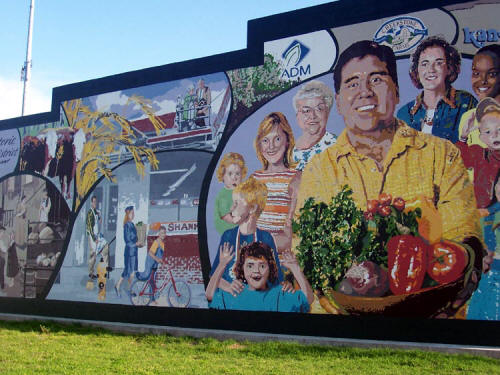
At Arkansas City,
Kansas, around thirty miles from here I was able to get my chauffeur, my
husband's friend, Jerry Cathey, to stop long enough to get a shot of this
mural on the side of a building there. The reason for this is because the
gray haired lady at the back is my Aunt Lucy. Her name is Lucy Rousseau
Hernandez, or was Mrs. Francis Hernandez, before my uncle passed away. Aunt
Lucy traces her genealogy back to the well know artist, Rousseau, in
Europe. She worked many years at Brick's Cafe in the kitchen as their cook
and then later worked for family, the Rameriz, in their cafe, The Green
Door. She is retired now and lives in the restored Osage Hotel. It is a
beautiful old building and looks as lovely as it originally did when it was
a showplace and a selected hotel in which to stay.
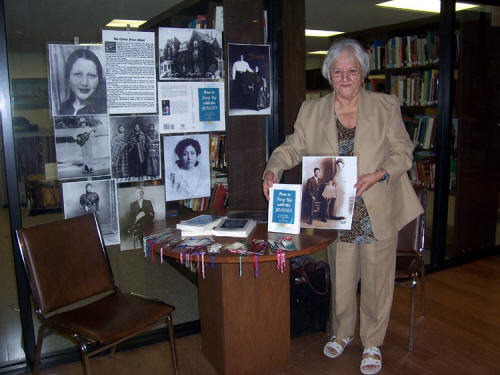
Behind me is a backdrop
of the antique photographs which depict the intermarriage between my
ancestors, the Joneses to my Native American Ponca folks. Handmade
bookmarkers hang off the edge of the table. These were the free hand-outs.
April, the director of the gift-shop, suggested we tape these pictures to
the window behind and that worked fine. Saved me a lot of carrying with a
heavy backdrop for hanging them.
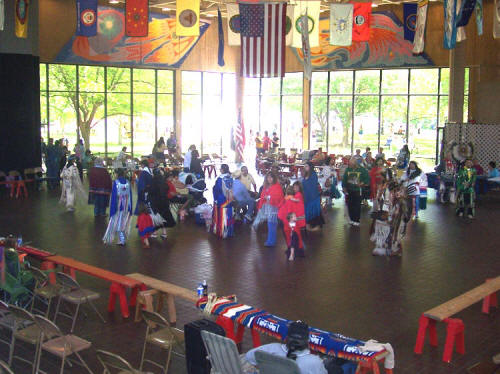
This is the indoor arena
at the Wichita American Indian Center. The building is beautiful and has
such a lovely collection of artwork. It is located at 650 N. Seneca
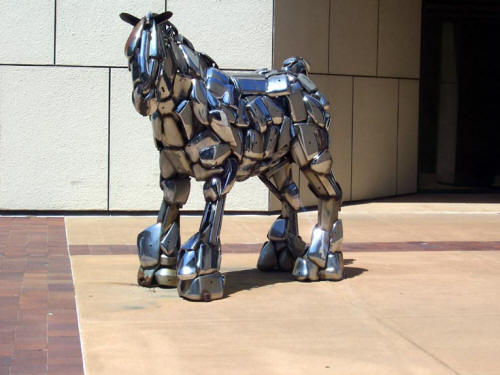
Back out on the street
briefly is this statue of a horse. The ultimate in recyling efforts because
it is made up of chrome, old car bumpers. The horse has been there for
numbers of years and still looks shiny as if it were brand new.
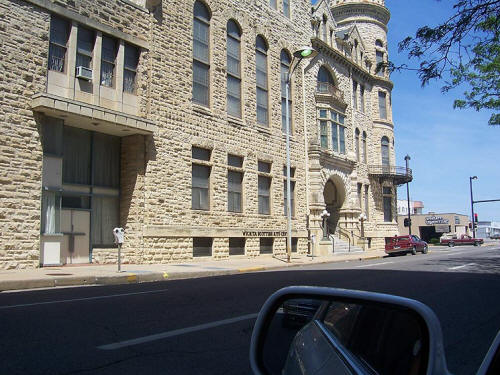
Here is the Scottish Rite
old, castle-like building.
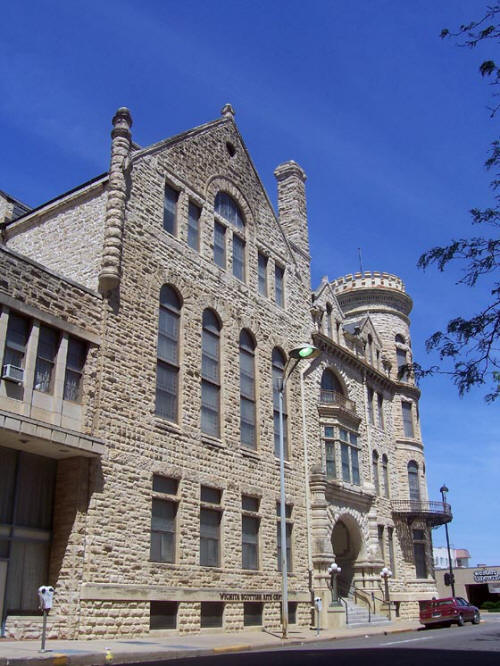
The Scottish Rite
building showing the top of the building with the top of the tower.
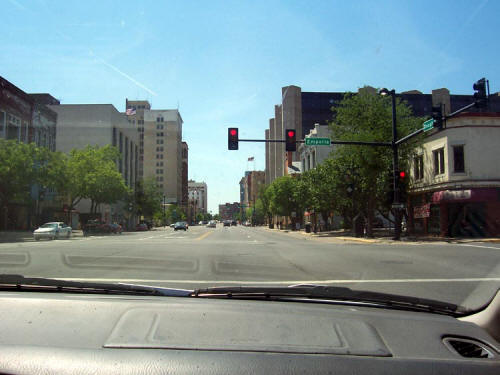
This Douglas is Street.
These broad old avenues are characteristic of Kansas towns and cities. On
the right looks to be one of the older structures still standing.
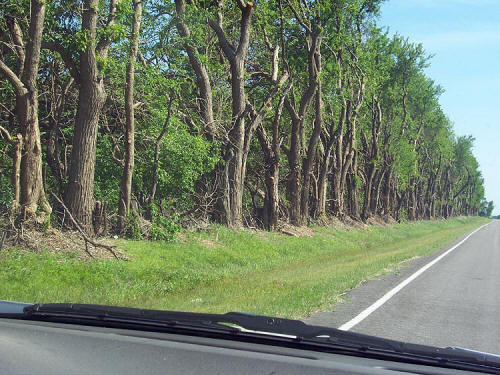
We are driving back
across the wheat fields of Kansas. This is one of the windbreaks planted for
drought and wind erosion control.
Timber Culture Act of 1873 encouraged tree planting on the plains.
Concern for the future of the windbreaks was renewed in 1975 with the
appearance of a report to Congress on the need to discourage their removal
from the Great Plains. After noting that soil erosion' was a problem in the
Great Plains, the report expressed concern that in some counties of the
central Plains up to 35 per cent of the original windbreaks had been removed
-mainly to make more land available for production. This economically based
action was being accelerated despite the fact that "most farmers and State,
Federal and local conservationists agree windbreaks prevent wind erosion and
are still needed in the Great Plains" . The problem was compounded by some
conservationists who felt that the windbreaks were no longer needed because
the introduction of other conservation practices (strip cropping, crop
rotation, stubble mulching, and emergency tillage) had rendered the
windbreaks obsolete. The report pointed out in reply (despite the 1954
evidence to the contrary above) that the windbreaks were a permanent
protection even during drought when most of the other measures "became less
effective."
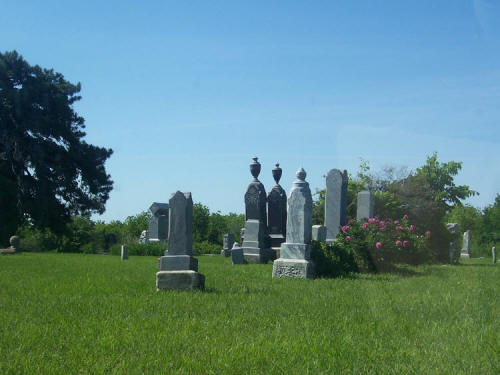
These old cemeteries hold
the bones, no doubt, of many early day settlers and border the main road.
They are all well kept with antique varieties of plants amid the stately old
stones.
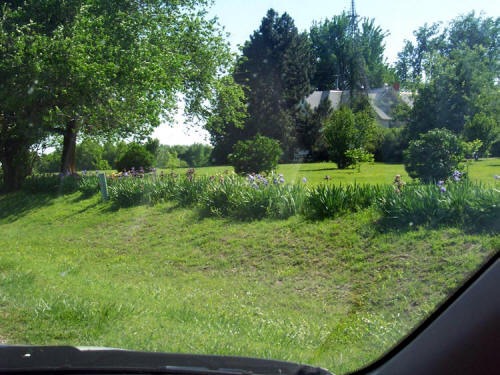
Directly at the side of
the road are numbers of these old homes which must have been in families for
years. The border of irises along the front next to the road were blooming.
It is just that much farther north of us to be. Ours here have already
bloomed and are gone. The very important use of the iris rhizome has been
lost in the portals of time but still remain for all these years from early
day pioneers who probably knew. The house is nearly hidden behind the trees
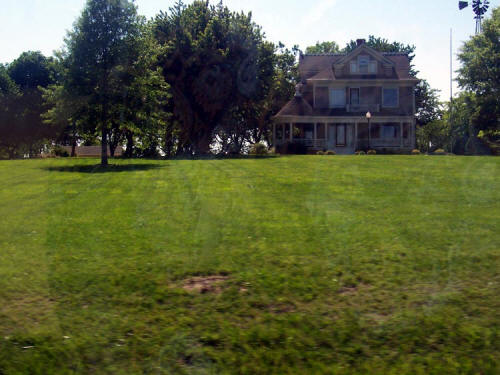
This house is more
visible and it can be seen how old the structure is because of its period
design.
So ended our trip to Wichita, Kansas. I was thankful to have Jerry drive
me there since he was raised in the area around Udall and Melvane. He knew
much about the country I had never heard before and pointed out the Walnut
River running quite a distance back from the road. I never even knew it was
there.
A large pile of sand taken
from that river could easily be seen from the road. However, the foliage of
the trees effectively hid the water. Jerry also knew these places of
interest to photograph in Wichita, Kansas. Another thing to help with the
pleasure of our drive was that Jerry did not take the interstate, else I
would not have had this to share with you. |

